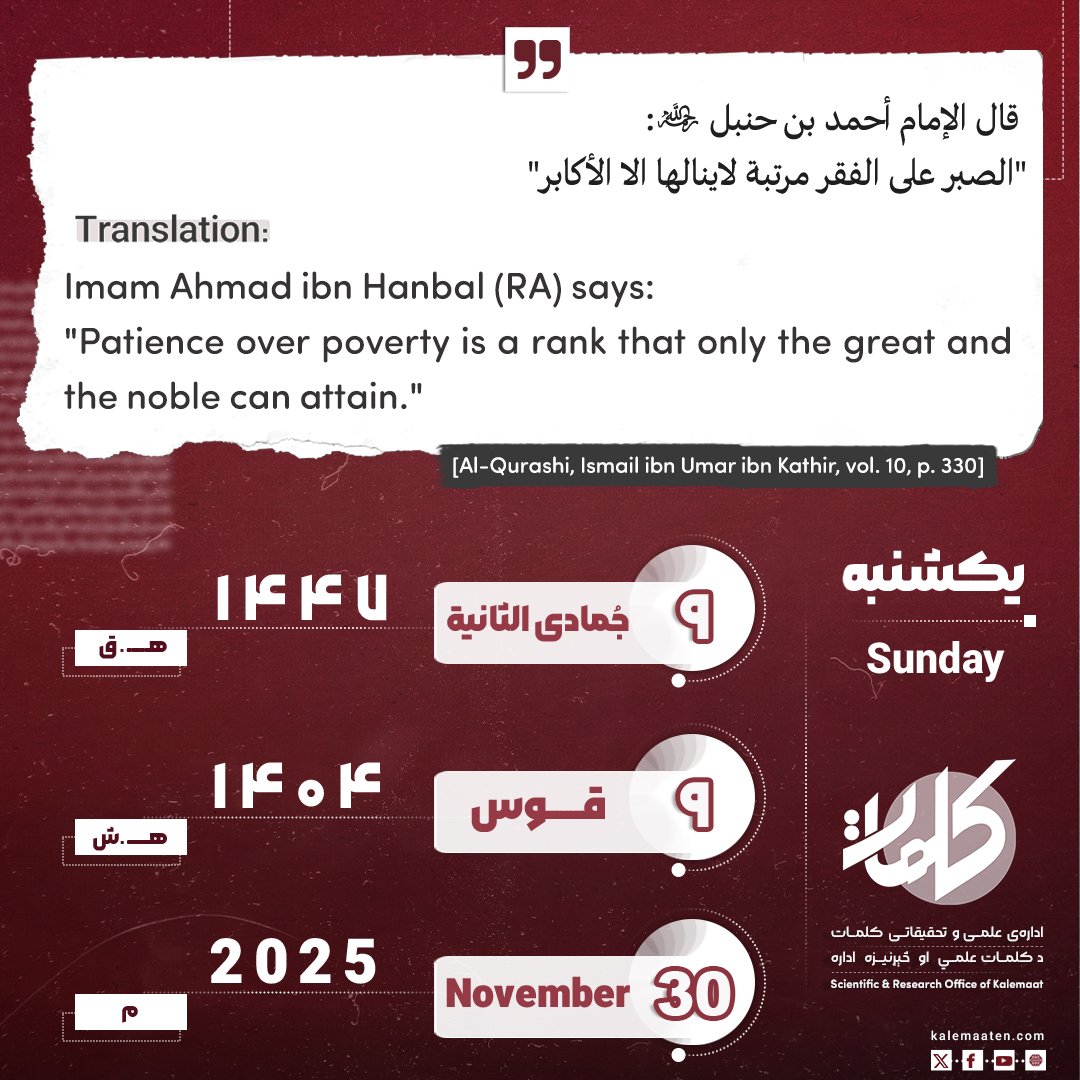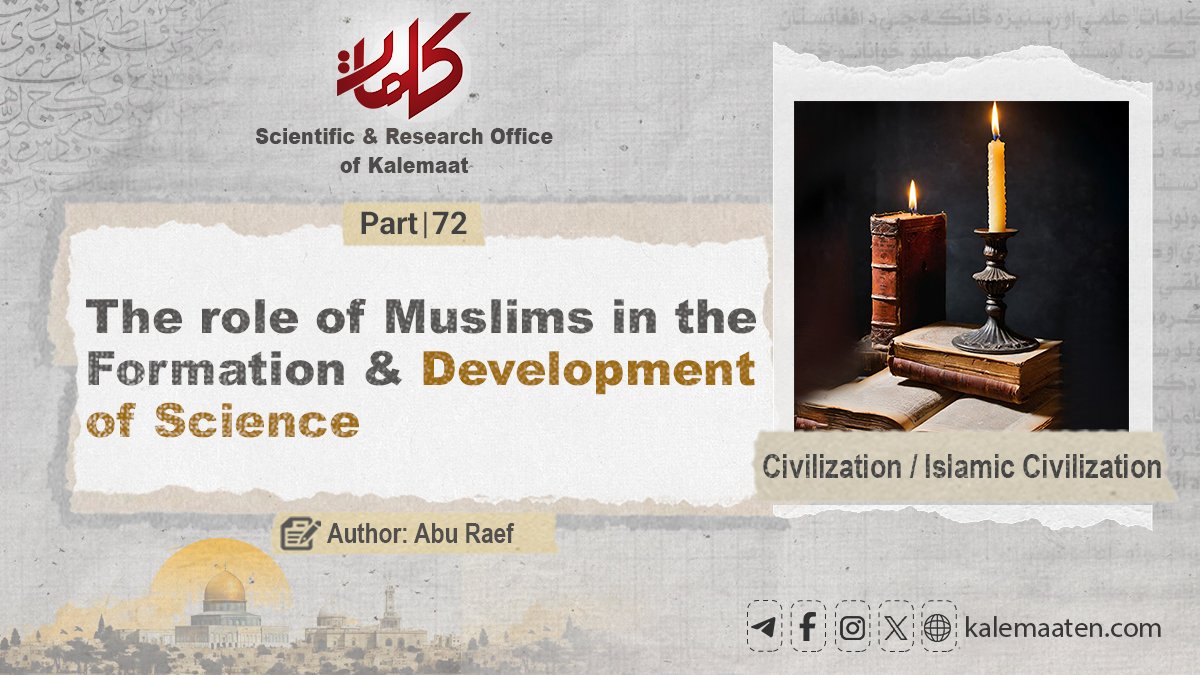Author: Abu Raef
The Role of Muslims in the Formation and Development of Sciences (Part 72)
Beautiful and Attractive Titles
In this discussion, we turn to another aspect of the magnificent Islamic civilization in the field of naming and titling the works and scientific achievements of Muslim scholars.
The culture and civilization of Islam were so elevated and rich that scholars and thinkers employed expressions and titles in their writings and achievements, each of which reflects a particular concept or meaning of the wonder and beauty of this civilization. Throughout human history, it is rare to find an author who wrote a book on jurisprudence, biography, Hadith, creed, or biographies and classes, and at the same time, the titles of those books themselves became part of the beauty.
The most prominent aspect of beauty in the titles of the writings of scholars of Islamic civilization was their attention to verbal elegance; that is, rhymed titles, where the title was divided into two parts, and the endings of both parts resembled one another. This similarity created a melodious rhythm when pronounced. There are numerous examples of this practice, some of which we mention:
-
الصارم المسلول على شاتم الرسول: the title of the book authored by Shaykh al-Islam Ibn Taymiyyah رحمه الله in which he explains the ruling on one who insults the Messenger of Allah (PBUH).
-
Imam Ibn al-Qayyim (MABH) wrote a book on types of sins and their dangers, titling it الجواب الكافي لمن سأل عن الدواء الشافي.
-
Likewise, when Lisan al-Din Ibn al-Khatib (MABH) wrote about the history of Granada in Andalusia (today’s Granada), he titled his book الإحاطة في أخبار غرناطة.
-
His contemporary, the historian Imam Ibn Khaldun (MABH) , named his historical work: ديوان المبتدأ والخبر في تاريخ العرب والبربر ومن عاصرهم من ذوي الشأن الأكبر.
-
When Imam al-Maqrizi (MABH) wrote about the development of Cairo and its plans, he chose the title المواعظ والاعتبار بذكر الخطط والآثار.
-
Similarly, Imam al-Qalqashandi رحمه الله wrote about systems and laws and titled his book: مآثر الإنافة في معالم الخلافة.
Concerning Hadith commentaries, we can name works such as:
-
فتح الباري شرح صحيح البخاري by Hafiz Ibn Hajar رحمه الله,
-
المنهاج شرح صحيح مسلم بن الحجاج by Imam Nawawi رحمه الله,
-
عون المعبود شرح سنن أبي داود by Shams al-Haqq Azimabadi,
-
تحفة الأحوذي شرح صحيح الترمذي by Safiyy al-Rahman Mubarakpuri.
In the field of creed and historical debates:
-
Imam Ibn Hazm (MABH) authored الفصل في الملل والأهواء والنحل.
-
Hujjat al-Islam Imam Abu Hamid al-Ghazali wrote الاقتصاد في الاعتقاد.
-
Imam al-Ash‘ari (MABH) authored الإبانة عن أصول الديانة.
-
Imam Ibn Hajar al-Haythami (MABH) wrote about the disputes among the Companions, titling his book: تطهير الجنان واللسان عن ثلب معاوية بن أبي سفيان مع المدح الجلي وإثبات الحق لعل.
Gold, Gems, and Pearls
In this way, the works of Muslim scholars continued to advance across the centuries. Beauty then took on another form; for in addition to the melodious sound of the titles, visual imagery also appeared within them: gold, silver, jewels, stars, suns, moons, seas, rivers, streams, trees, branches, and fruits. All of these were titles of books whose subjects were purely academic and scientific—often dominated by dryness—but the Islamic spirit of beauty permeated even the smallest details. For example:
-
The greatest encyclopedia in history and geography—after al-Tabari’s History—was that of al-Mas‘udi (d. 346 AH), titled مروج الذهب ومعادن الجوهر.
-
The Tafsir of Imam al-Tha‘labi رحمه الله was titled الجواهر الحسان في تفسير القرآن.
-
Imam Ibn ‘Abd al-Barr (MABH) authored a concise book on the expeditions of the Prophet (PBUH), titled الدرر في اختصار المغازي والسير.
-
Imam Muhyi al-Din Ibn Abi al-Wafa wrote about prominent figures of the Hanafi school and titled his work: الجواهر المضية في طبقات الحنفية.
-
The Mamluk-era historian Abu Bakr Dawudari named his book كنز الدرر وجامع الغرر.
Then Imam Ibn Hajar رحمه الله authored a book on prominent figures of the eighth century, titled الدرر الكامنة في أعيان المائة الثامنة. When Imam al-Suyuti رحمه الله wrote his Tafsir of the Qur’an, he named it الدر المنثور في التفسير بالمأثور. Imam Ibn ‘Imad al-Hanbali authored a historical work titled شذرات الذهب في أخبار من ذهب. Likewise, Imam al-Suyuti رحمه الله authored another work, اللآلئ المصنوعة في الأحاديث الموضوعة. Among other titles are:
-
الدر المصون في علم الكتاب المكنون by al-Samin al-Halabi,
-
كنز العمال في سنن الأقوال والأفعال by ‘Ala’ al-Din al-Muttaqi al-Hindi,
-
كنز الدقائق by Abu al-Barakat al-Nasafi in Hanafi jurisprudence,
-
اللؤلؤ والمرجان فيما اتفق عليه الشيخان by Muhammad Fu’ad ‘Abd al-Baqi.
In other fields:
-
Imam al-Qalqashandi (MABH) wrote an encyclopedic work in literature, history, politics, and systems, titling it صبح الأعشى في صناعة الإنشا.
-
Imam Ibn Taghri Birdi authored a historical book called النجوم الزاهرة في ملوك مصر والقاهرة.
-
Imam Shams al-Din al-Sharbini titled his Tafsir of the Qur’an السراج المنير.
-
Imam Abu Hafs Siraj al-Din al-Nashshar wrote in the science of Qur’anic recitations, titling his work البدور الزاهرة في القراءات العشر المتواترة.
Light, Sky, and the Celestial Spheres
Another group of writings bore titles that referred to concepts such as light, the sky, and the celestial spheres. Imam Ibn al-Mulaqqin undertook the extraction of Hadiths and traditions found in Imam al-Rafi‘i’s commentary on the Shafi‘i school (al-Fath al-‘Aziz fi Sharh al-Wajiz), and named his work: البدر المنير في تخريج الأحاديث والآثار الواقعة في الشرح الكبير.
Similarly, Imam Shams al-Din al-Mardini wrote a commentary on al-Waraqat by Imam al-Haramayn al-Juwayni in the principles of jurisprudence, titling it: الأنجم الزاهرات على حل ألفاظ الورقات.
Imam Ibn Kayyal studied narrators accused of confusion despite their trustworthiness, and titled his book: الكواكب النيرات في معرفة من رمي بالاختلاط من الرواة الثقات.
Imam al-Suyuti ((MABH) also versified the principles of jurisprudence and titled it الكوكب الساطع نظم جمع الجوامع. He also authored another book titled البدور السافرة في أمور الآخرة. We conclude this section with a beautiful title chosen by Imam al-Saffarini (MABH) for his book on creed: لوامع الأنوار البهية وسواطع الأسرار الأثرية لشرح الدرة المضية في عقد الفرقة المرضية.
Titles Related to Seas, Streams, and Waterways
On many occasions, Muslim scholars chose titles that referred to the sea of knowledge and its streams. Among them are:
-
Imam Ibrahim ibn Muhammad al-Halabi (MABH), a great Hanafi scholar, authored a book in Hanafi jurisprudence titled ملتقى الأبحر. Later, Imam Shaykhzadeh (MABH) wrote a commentary on it, calling it مجمع الأنهر شرح ملتقى الأبحر.
-
Imam Ibn Jama‘ah (MABH) wrote a book on Hadith sciences titled المنهل الروي في مختصر علوم الحديث النبوي.
-
Imam Ibn Taghri Birdi authored a biographical work on notable figures of his time, calling it المنهل الصافي والمستوفى بعد الوافي.
-
Imam Ibn Nujaym al-Hanafi رحمه الله wrote a commentary on كنز الدقائق, titling it البحر الرائق شرح كنز الدقائق.
-
Likewise, Imam Abu Hayyan al-Andalusi (MABH) wrote his Tafsir under the title البحر المحيط, and Imam al-Zarkashi (MABH) authored a book in the principles of jurisprudence with the same title.
-
The Tafsir of Shaykh al-Shanqiti (MABH) was published under the title العذب النمير من مجالس الشنقيطي في التفسير.
-
Imam al-Samarqandi (MABH) also wrote another Tafsir of the Qur’an titled بحر العلوم.
Titles Referring to Gardens, Flowers, and Fruits
Examples include:
-
Imam Ibn Hibban (MABH) wrote a book on exhortation and spiritual refinement titled روضة العقلاء ونزهة الفضلاء.
-
Imam al-Suhayli (MABH) “ wrote about the life of the Prophet (PBUH) and his characteristics, titling it الروض الأنف.
-
Imam Ibn al-Jawzi (MABH) authored a book on exhortation called بستان الواعظين ورياض السامعين.
-
Shihab al-Din Abu Shamah wrote a history of the reigns of Nur al-Din and Salah al-Din, titling it الروضتين في أخبار الدولتين.
-
Imam Nawawi (MABH) authored رياض الصالحين من كلام سيد المرسلين, collecting and explaining the virtues and manners of Islam. He later wrote a book in Shafi‘i jurisprudence titled روض الطالبين في فقه المذهب الشافعي.
-
Imam al-Himyari authored a history book titled الروض المعطار في خبر الأقطار.
-
Imam Ibn al-Qayyim (MABH) authored a spiritual work titled روضة المحبين ونزهة المشتاقين.
-
Imam Ibn al-Jazari رحمه الله authored الزهر الفاتح في من تنزه عن الذنوب والقبائح.
-
Hafiz Ibn Hajar (MABH) authored a book about al-Khidr (MABH), titled الزهر النضر في أخبار الخضر.
-
Imam al-Suyuti (MABH) authored الروض الأنيق في فضل الصديق.
-
Ibn Ghazi (MABH) wrote a history of the Moroccan city of Meknes, titling it الروض الهتون في أخبار مكناسة الزيتون.
-
Ibn Iyas (MABH) wrote a history titled بدائع الزهور في وقائع الدهور.
-
al-Maqri (MABH) authored a history of Andalusia titled نفح الطيب من غصن الأندلس الرطيب.
-
In the 12th century AH, Muhammad ibn ‘Isa ibn Kanan (MABH) authored a book on the laws of the caliphate and rulers, titling it حدائق الياسمين في ذكر قوانين الخلفاء والسلاطين.
-
Similarly, the book الروضة الندية شرح الدرر البهية in Zaydi jurisprudence was authored by al-Qanuji (MABH).
-
Sayyed Qutb (MABH) titled his Tafsir في ظلال القرآن.(1)
These titles, along with many others that remain unmentioned, show us that Muslim scholars and thinkers considered beauty and elegance in naming their works and achievements, thereby highlighting an important dimension of Islamic civilization.
continues…
Previous Part / Next Part
References:
[1]. What did the Muslims bring to the world? pp. 674-678. To learn more about these books and their authors, as well as the topics they cover, you can refer to the following sources:
-
Tabaqat al-Fiqh by Ibn Sa’d, Allama Sabki, and Ibn Khallikan; 2. Tabaqat al-Mufassirin by Allama Suyuti; 3. Kashf al-Dhanun an-Asami al-Kitab wa al-Funun by Haji Khalifa; 4. Tazkirat al-Hufaz by Allama Dhahabi; 5. And… .



